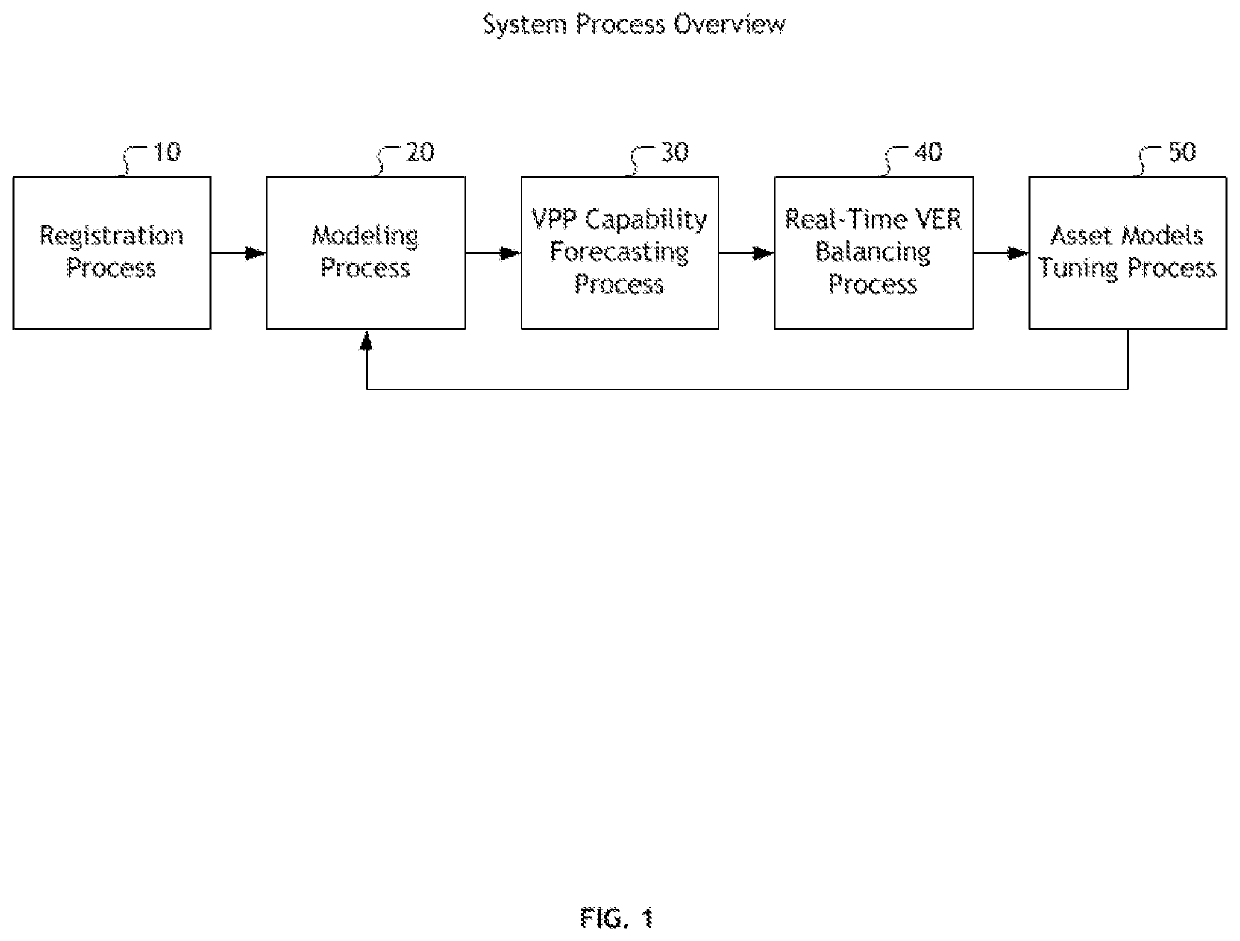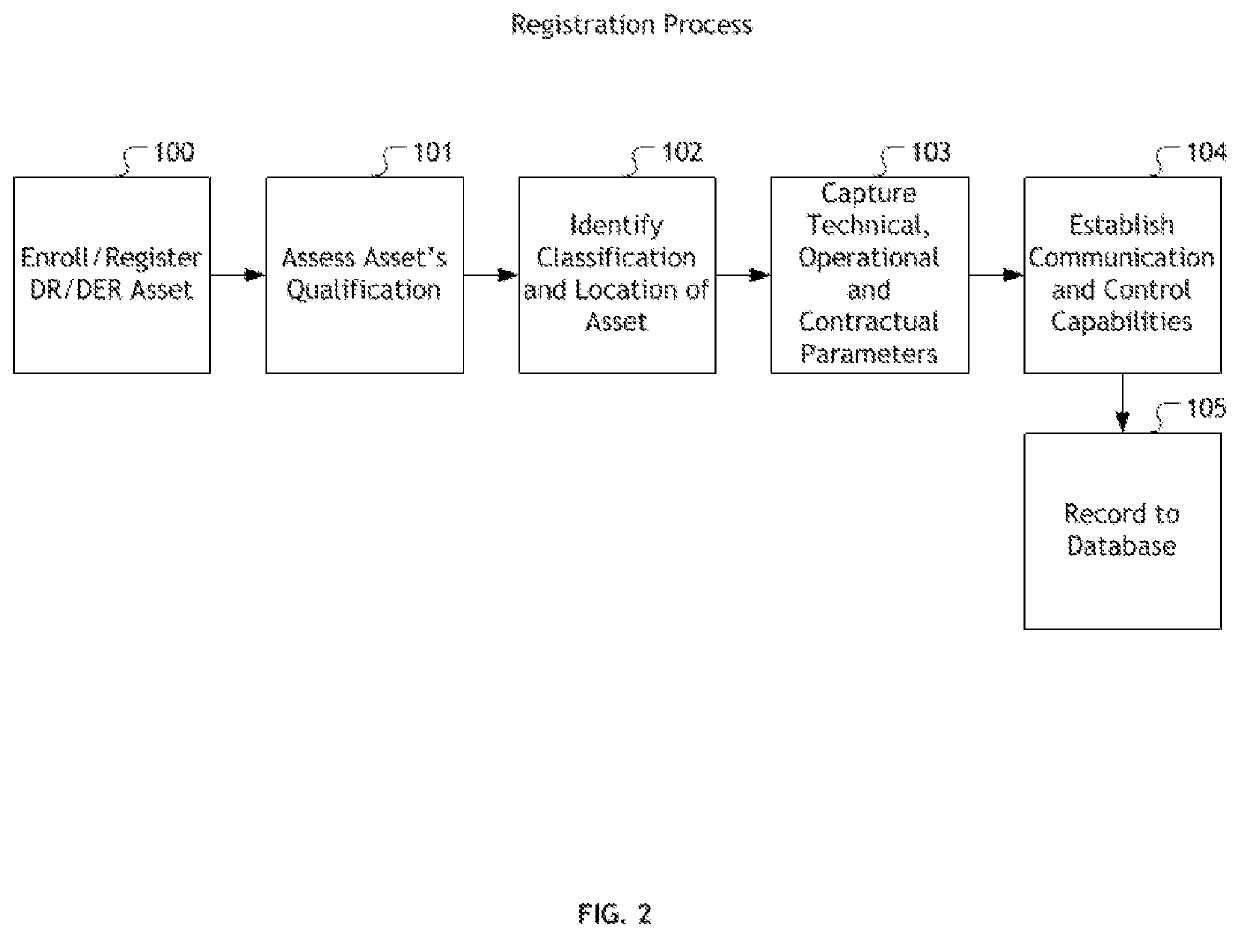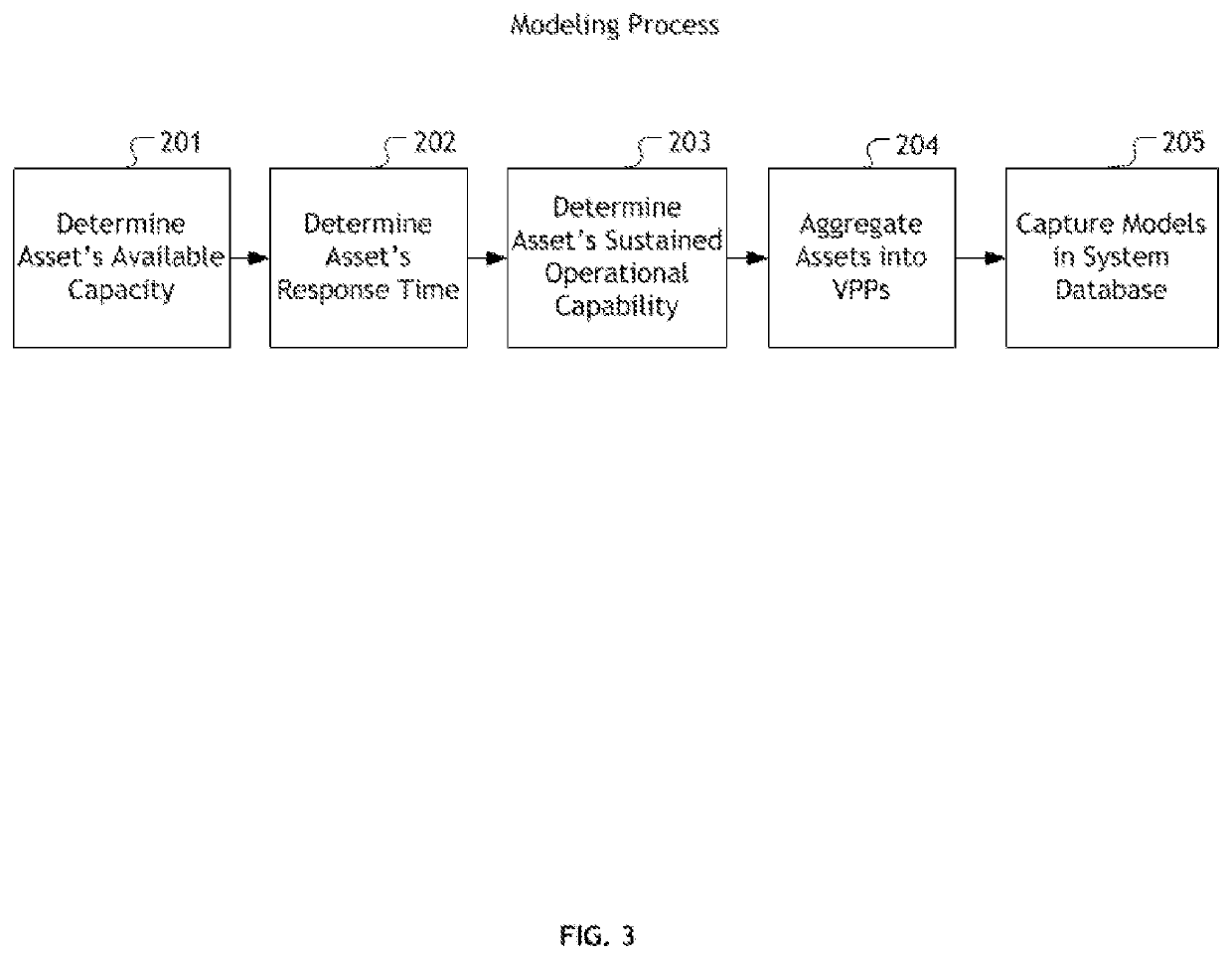Model and control virtual power plant performance
a virtual power plant and power generation technology, applied in the field of electric power/energy, can solve the problems of high cost, high cost, and inability to accurately predict the output capacity and capabilities of the power plant, and achieve the effect of accurate prediction capability and capacity
- Summary
- Abstract
- Description
- Claims
- Application Information
AI Technical Summary
Benefits of technology
Problems solved by technology
Method used
Image
Examples
Embodiment Construction
Overview
[0052]FIG. 1 is a flow chart illustrating a broad overview of the processes in a preferred embodiment of the present invention. In registration process 10, DR / DER assets are registered in a DR / DER program and ranked on their qualifications for such a program, and data are gathered on the assets' location on the electric distribution grid, usage and contractual parameters, load and generation capabilities, among others. In modeling process 20, the asset data gathered in registration process 10 are translated to parameters that are directly indicative of the asset's potential performance as part of a VPP. Examples of these parameters include available capacity for curtailment and the delay between the time a curtailment command is sent to an asset and the time the benefits from curtailing the asset's load are made available. This translated asset data is used to aggregate assets into VPPs. In VPP capability forecasting process 30, contemporaneous and near-future data are recor...
PUM
 Login to View More
Login to View More Abstract
Description
Claims
Application Information
 Login to View More
Login to View More - R&D
- Intellectual Property
- Life Sciences
- Materials
- Tech Scout
- Unparalleled Data Quality
- Higher Quality Content
- 60% Fewer Hallucinations
Browse by: Latest US Patents, China's latest patents, Technical Efficacy Thesaurus, Application Domain, Technology Topic, Popular Technical Reports.
© 2025 PatSnap. All rights reserved.Legal|Privacy policy|Modern Slavery Act Transparency Statement|Sitemap|About US| Contact US: help@patsnap.com



